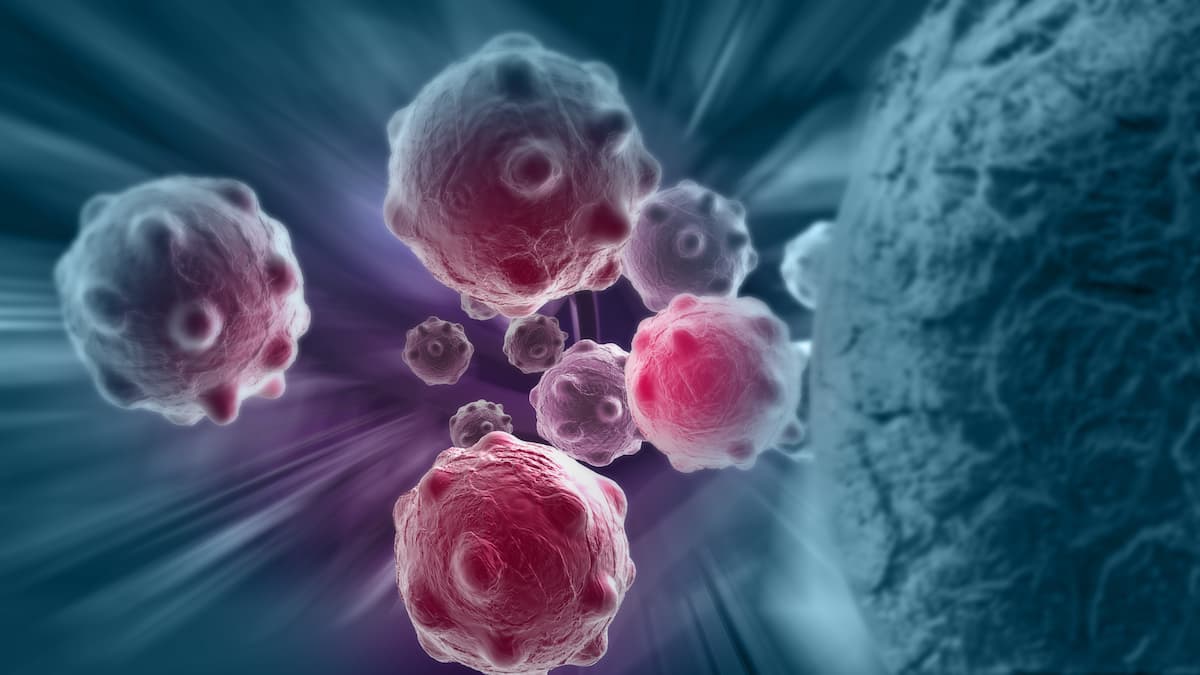NX-5948 Earns Fast Track Designation in R/R Waldenström Macroglobulinemia
Results from a phase 1a trial showed that NX-5948 yielded an overall response rate of 77.8% in later lines of treatment for patients with WM.
Results from a phase 1a trial showed that NX-5948 yielded an overall response rate of 77.8% in later lines of treatment for patients with WM.

NX-5948, a highly selective Bruton’s tyrosine kinase (BTK) degrader, has been granted fast track designation by the FDA for the treatment of adult patients with relapsed or refractory Waldenström macroglobulinemia (WM) who have undergone 2 previous lines of therapy including a BTK inhibitor, according to a press release from the developer, Nurix Therapeutics, Inc.1
In January 2024, NX-5948 received fast track designation for the treatment of adult patients with relapsed/refractory chronic lymphocytic leukemia (CLL) or small lymphocytic lymphoma (SLL) after at least 2 lines of therapy including a B-cell lymphoma 2 (BCL2) inhibitor and a BTK inhibitor.2 In November 2024, the European Medicines Agency granted NX-5948 the PRIME designation for the treatment of adult patients with relapsed/refractory CLL/SLL after a BCL2 inhibitor and a BTK inhibitor.3
Positive phase 1 data from an ongoing multicenter, open-label phase 1a clinical trial (NCT05131022) presented at the 12th International Workshop on Waldenström Macroglobulinemia (IWWM-12) informed the FDA’s decision.
The trial is evaluating NX-5948 in patients with relapsed/refractory B-cell malignancies who have received at least 2 prior lines of therapy or 1 prior line of therapy for primary central nervous system lymphoma, and for whom no other therapies can provide clinical benefit.4 Patient indications in the trial include: WM, CLL, SLL, mantle cell lymphoma, and diffuse large B-cell lymphoma.
Arthur T. Sands, MD, PhD, president and chief executive officer of Nurix, said in the press release, “Fast track designation for NX-5948 is an important recognition of the unmet patient need in [WM], particularly in the growing number of patients whose cancer has progressed following BTK inhibitor therapy. This designation follows encouraging safety and efficacy data from our ongoing phase 1 clinical trial, demonstrating early promise of clinical benefit with potential for durable outcomes. We continue to enroll [patients with WM] in the ongoing phase 1b expansion cohort and anticipate sharing additional clinical data in 2025.”1
Results presented at IWWM-12 showed that, at the data cutoff, NX-5948 elicited an overall response rate (ORR) of 77.8% in patients with WM (n = 9).5 Furthermore, 0 patients reported complete response, 7 (77.8%) patients reported partial responses, 2 (22.2%) patients reported stable disease, and 0 reported progressive disease. Additionally, of the 9 patients with WM, 8 showed a steady reduction in Immunoglobulin M (IgM) levels beginning at the 2nd treatment cycle. One patient reported a more than 90% decrease in IgM level.
Safety results from the overall trial population demonstrated a tolerable safety profile, and it was noted that the safety data for WM was consistent with findings from the overall population, though WM data was not shown separately.
In the overall population, the most common treatment-emergent adverse events (TEAEs) of any grade were purpura/contusion (35.4%), thrombocytopenia (26.6%), neutropenia (20.3%), and fatigue (17.7%). Neutropenia (15.2%) was the most common TEAE of grade 3 or higher.
Key eligibility criteria include an age of 18 years or older, relapsed/refractory disease, at least 2 prior lines of therapy, and an ECOG performance status of 0 or 1. Patients with WM were administered anywhere from 50 to 600 mg of NX-5948 once a day.
Patients with WM were specifically required to either be receiving treatment at least in the third line post-BTK inhibitor globally or in the second line post-BTK inhibitor in the UK.
Of 13 patients with WM included in the analysis, the median age was 74.0 (range, 64-82), and the median number of previous therapies was 3.0 (range, 2-5). Previous treatments included a BTK inhibitor (100%), a BCL2 inhibitor (7.7%), a BTK and BCL2 inhibitor (7.7%), and chemo/chemo-immunotherapies (100%). Also, 8 (61.5%) patients had MYD88-mutated disease, and 2 (15.4%) had CXCR4-mutated disease.
References
- Nurix Therapeutics receives U.S. FDA fast track designation for NX-5948 for the treatment of relapsed or refractory Waldenstrom’s macroglobulinemia. News release. Nurix Therapeutics, Inc. December 19, 2024. Accessed December 19, 2024. https://tinyurl.com/yd6nvs9v
- Nurix Therapeutics receives U.S. FDA fast track designation for NX-5948 for the treatment of relapsed or refractory CLL and SLL. News release. Nurix Therapeutics, Inc. January 16, 2024. Accessed December 19, 2024. http://tinyurl.com/4da8drrm
- Nurix Therapeutics receives PRIME designation from the European Medicines Agency for NX-5948 for the treatment of relapsed or refractory chronic lymphocytic leukemia. News release. Nurix Therapeutics. November 20, 2024. Accessed December 19, 2024. https://tinyurl.com/yw3swcc3
- A study of NX-5948 in adults with relapsed/refractory B-cell malignancies. ClinicalTrials.gov. Updated July 11, 2024. Accessed December 19, 2024. https://tinyurl.com/4s6z4sx2
- O’Conner P. NX-5948: BTK degrader with activity in lymphoid malignancies. Presented at: 12th International Workshop on Waldenstrom’s Macroglobulinemia. October 19, 2024; Prague, Czech Republic. https://tinyurl.com/upd6kxuw
Navigating AE Management for Cellular Therapy Across Hematologic Cancers
A panel of clinical pharmacists discussed strategies for mitigating toxicities across different multiple myeloma, lymphoma, and leukemia populations.